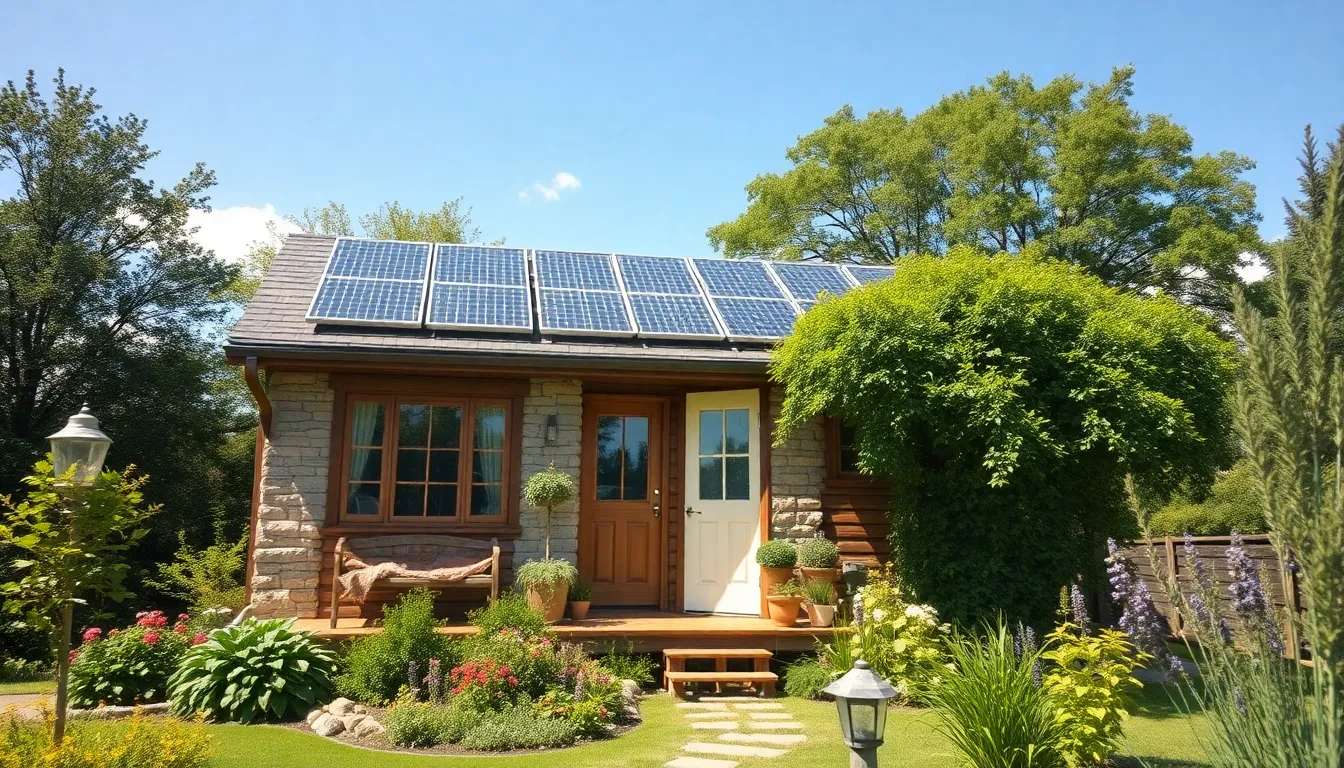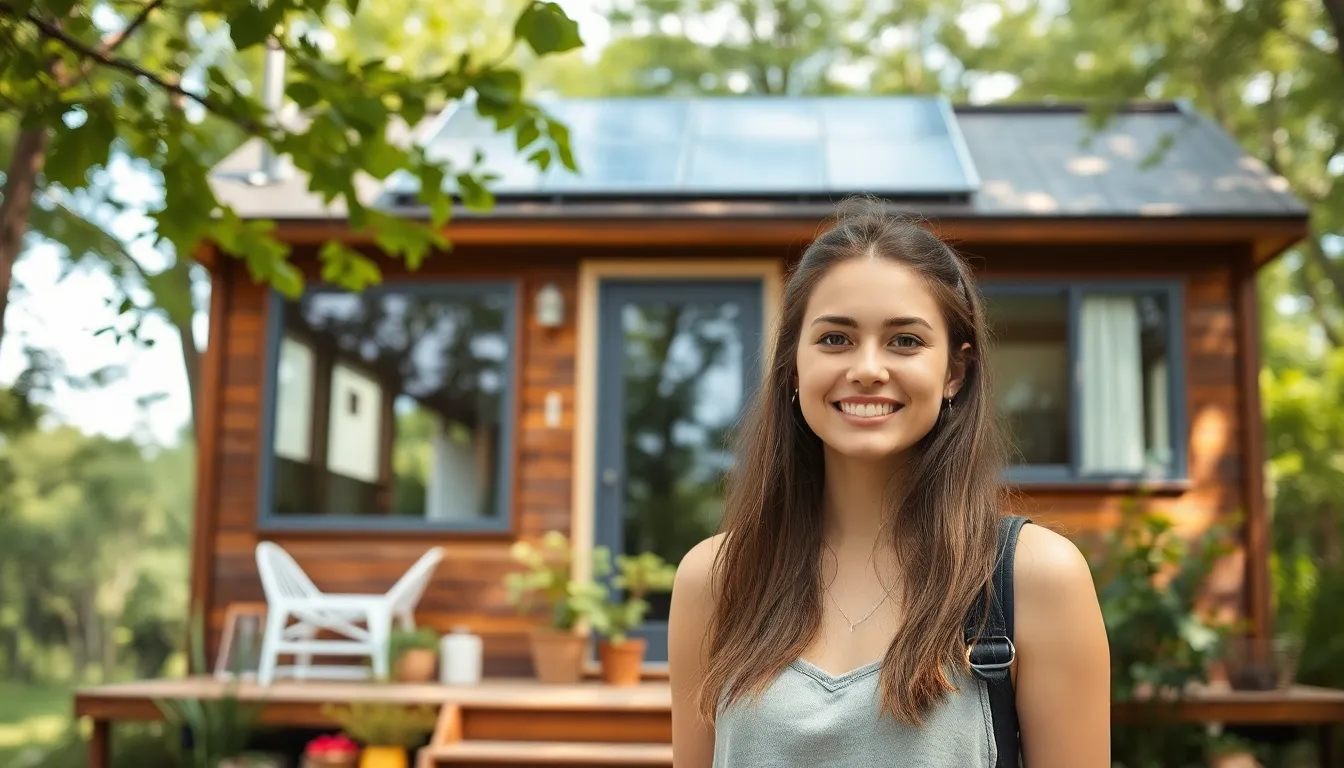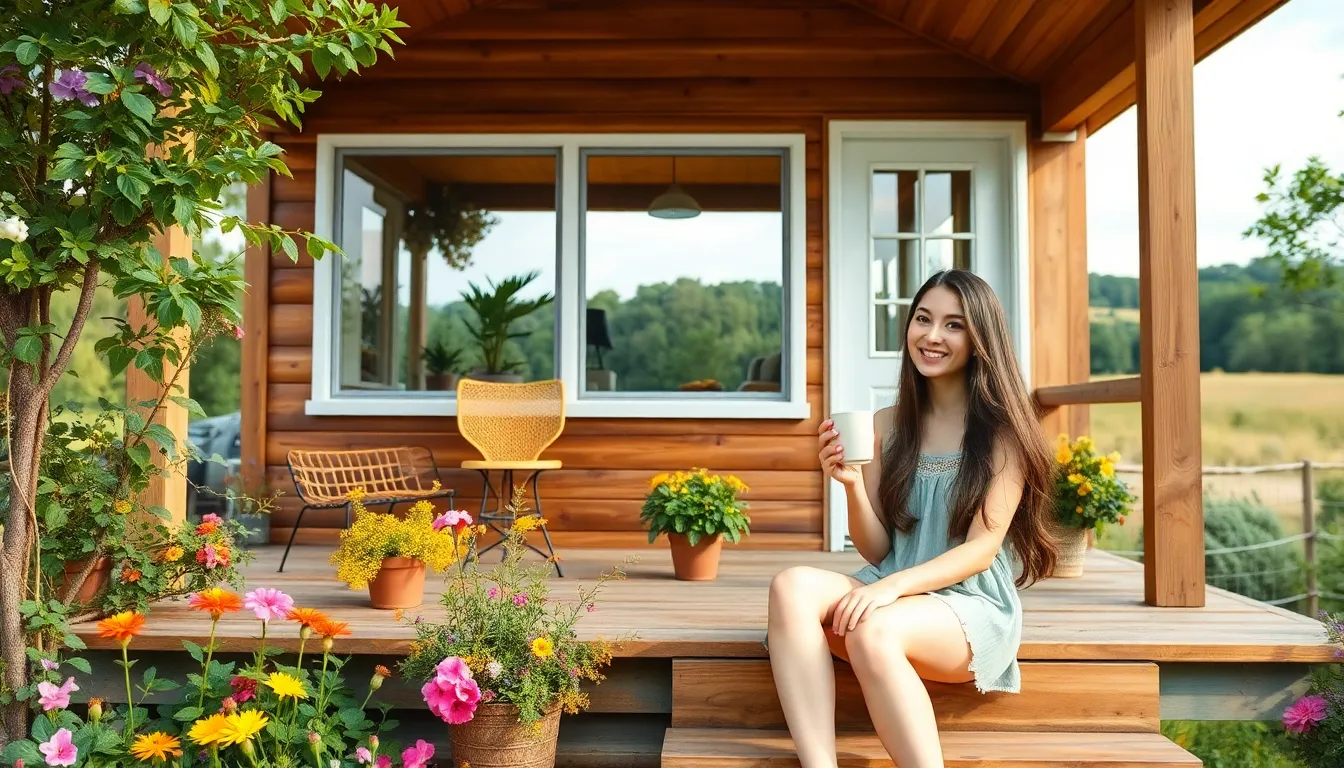Table of Contents
ToggleIn a world where bigger often seems better, eco-friendly tiny homes are flipping the script. These pint-sized palaces pack a punch, proving that downsizing doesn’t mean sacrificing style or sustainability. Imagine living in a cozy space that not only saves you cash but also helps save the planet—it’s like getting a warm hug from Mother Nature herself!
With clever designs and innovative materials, tiny homes offer a guilt-free way to embrace minimalism. They’re perfect for those who want to live large while leaving a smaller footprint. Plus, who wouldn’t want to brag about their chic, eco-conscious abode at the next dinner party? As the tiny home movement gains momentum, it’s time to explore why these little wonders are the future of green living.
Overview of Eco-Friendly Tiny Homes
Eco-friendly tiny homes redefine modern living by merging minimalism with environmental consciousness. These residences typically range from 100 to 400 square feet, offering a compact lifestyle that promotes energy efficiency. Sustainability plays a central role in the design of these homes, as they often utilize renewable materials and energy-efficient appliances.
Alternative energy sources, including solar panels and wind turbines, often power eco-friendly tiny homes. Incorporating composting toilets and greywater systems contributes to reducing water usage and waste. These sustainable features enhance self-sufficiency while minimizing the ecological impact.
Design flexibility characterizes eco-friendly tiny homes, allowing owners to personalize their spaces without losing sight of sustainability. Interior design often emphasizes natural lighting and open floor plans, improving both aesthetics and energy efficiency. Landscaped outdoor areas frequently enhance the living experience, incorporating native plants that require minimal water.
Affordability remains a significant benefit of eco-friendly tiny homes. Many owners experience reduced housing expenses due to lower utility bills and maintenance costs. Additionally, the small footprint enables individuals to downsize their consumption and embrace a simpler lifestyle.
Eco-friendly tiny homes appeal to a diverse range of individuals, including young professionals, retirees, and environmentally-conscious families. Each residence provides an excellent solution for those wanting to simplify their lives while positively impacting the environment. As the movement gains traction, more resources and designs continue to emerge, enabling a broader audience to participate in sustainable living.
Benefits of Eco-Friendly Tiny Homes

Eco-friendly tiny homes offer numerous advantages. These benefits span environmental, financial, and lifestyle aspects, making them an attractive choice for many.
Environmental Impact
Reduced ecological footprints characterize eco-friendly tiny homes. Smaller living spaces inherently consume fewer resources, leading to a decrease in energy usage. Many owners incorporate solar panels and wind turbines, enhancing energy independence. Natural materials for construction and design contribute to sustainability. Their efficient systems, like composting toilets and greywater management, significantly minimize waste and water consumption. Studies show these features together help to lower overall environmental impact, aligning housing choices with green living goals.
Financial Savings
Lower housing costs appeal to many aspiring homeowners. Tiny homes typically require less initial investment, making them accessible for various budgets. Utility bills drop substantially thanks to energy-efficient appliances and renewable energy sources. Maintenance costs also decrease, as smaller spaces entail less wear and tear. For families and individuals alike, these savings enable better financial management, allowing for investment in experiences or savings rather than excessive housing expenses. Overall, financial growth becomes feasible when living in eco-friendly tiny homes, promoting a simple yet fulfilling lifestyle.
Design Features of Eco-Friendly Tiny Homes
Eco-friendly tiny homes incorporate innovative design features that enhance sustainability and efficiency. These elements aim to reduce environmental impact while promoting a compact living lifestyle.
Sustainable Materials
Sustainable materials form the backbone of eco-friendly tiny home construction. Wood sourced from responsibly managed forests contributes to lower carbon footprints. Recycled steel or aluminum often replaces traditional building materials, providing durability and sustainability. Low-VOC paints and finishes improve indoor air quality while minimizing toxic emissions. Bamboo offers an appealing alternative; it’s renewable and strong, perfect for flooring and cabinetry. Additionally, natural insulation materials like sheep’s wool or recycled denim enhance energy efficiency. Choices reflect a commitment to reducing waste and conserving natural resources, showcasing the potential of environmentally friendly design.
Energy Efficiency
Energy efficiency stands at the forefront of eco-friendly tiny home design. Proper insulation minimizes heat loss, leading to reduced energy consumption throughout the year. Solar panels frequently supply renewable energy, allowing homeowners to run appliances without relying solely on the grid. Energy-efficient appliances, including refrigerators and water heaters, consume less power compared to standard models. LED lighting illuminates spaces while utilizing minimal electricity, further promoting energy savings. Rainwater collection systems facilitate water conservation, providing an alternative source for irrigation and non-potable uses. These features combine to create homes that not only lower energy bills but also enhance self-sufficiency and environmental stewardship.
Challenges of Eco-Friendly Tiny Homes
Eco-friendly tiny homes present various challenges that potential owners must navigate. Understanding these obstacles aids in making informed decisions about sustainable living.
Space Limitations
Space limitations pose significant challenges in eco-friendly tiny homes. Many occupants struggle with minimal storage options and space for daily activities. Efficient use of space often requires innovative design solutions, such as multifunctional furniture and vertical storage. Creativity plays a crucial role in maximizing limited square footage. Lack of designated areas for hobbies or guests may restrict lifestyle choices, creating a need for adaptability. Homeowners often find that prioritizing essential belongings leads to a simpler and more organized life.
Zoning Regulations
Zoning regulations can complicate the implementation of eco-friendly tiny homes. Many local governments impose strict codes that dictate minimum square footage or restrict tiny homes in certain areas. Navigating these regulations often requires extensive research and patience. Some regions lack clear guidelines, making the permitting process cumbersome and uncertain. Communities may resist tiny home developments due to misconceptions about their sustainability and safety. Collaborating with local authorities and advocates can help address concerns while fostering awareness about the benefits of tiny living.
Eco-friendly tiny homes represent a powerful shift towards sustainable living. By embracing minimalism and innovative design, they offer a practical solution for those seeking to reduce their ecological footprint while enjoying a stylish lifestyle. The benefits extend beyond environmental impact, providing financial savings and enhancing life quality through simplified living.
As this movement continues to grow, individuals are encouraged to explore the possibilities that eco-friendly tiny homes present. With a commitment to sustainability and resourcefulness, tiny homes pave the way for a greener future. Embracing this trend not only transforms personal living spaces but also contributes to a collective effort toward a more sustainable planet.



